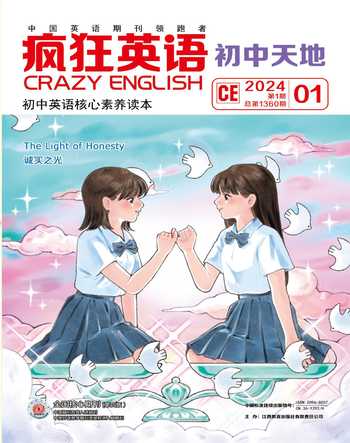The Essence of Dumplings:Celebrating Winter Solstice and New Year饺子的精髓:庆祝冬至和新年
史珺
美食文化是一个国家和民族传统文化的重要组成部分,它不仅代表着当地的饮食特色,也反映了人民的生活方式和文化价值。为此,编辑部策划了“美食”主题文章。2024 年《中国风》栏目,我们将每期介绍一种美食。本期,请跟随我们的脚步走进“饺子”的世界。
Chinese 1)cuisine is knownfor its deep cultural significance,particularly during festivals. Amongits diverse dishes, dumplings, orjiaozi, hold a special place.
In northern China, peoplegenerally eat dumplings on theWinter Solstice, a custom signifying a warm winter. This tradition stems from the medicinaldumplings created by Zhang Zhongjing in the Eastern HanDynasty, originally meant to warm the body and heal frostbittenears.
Another significant time for dumplings is the Lunar NewYear. On Lunar New Years Day, families gather to make andenjoy dumplings. The act of making dumplings, with their ingotlikeshape, is considered a way of welcoming wealth in thecoming year.
Over the centuries, dumplings evolved. During the ThreeKingdoms to the Southern and Northern Dynasties period,they were enjoyed with soup, similar to wontons, and werea favorite among all ages. This style is still popular. And innorthern China, dumplings are commonly eaten with a dippingsauce made of vinegar and chili oil, and occasionally withsome soy sauce added in.
2)Archaeological discoveries inChongqing from the Three Kingdomsperiod include terracotta 3)sculpturesdepicting chefs cooking variousdishes, with dumplings prominentlyfeatured. This indicates the popularityof dumplings even back then.
Dumplings represent the warmthof family and the richness of Chineseculture. They are more than a dish;they are a cherished tradition,bringing together generations in ashared experience of cooking andfeasting. From their medicinal originsto their 4)integral role in festivals,dumplings have transcended time,becoming a symbol of family unity,cultural heritage, and the enduringspirit of the Chinese people.
1) cuisine n. 烹飪;菜肴
2) archaeological adj. 考古的
3) sculpture n. 雕塑
4) integral adj. 必需的
中国饮食以其深厚的文化意义而闻名,特别是在节日中。在众多不同的美食中,饺子占据了特殊的位置。
在北方,人们通常在冬至这天吃饺子,这是一种意味着温暖冬天的习俗。这一传统源自东汉张仲景创造的药用饺子,最初意在温暖身体,治疗冻伤的耳朵。
另一个重要的吃饺子时刻是春节。在新年那一天,家庭成员聚集在一起制作和享用饺子。因为饺子形似元宝,所以制作饺子寓意招财进宝。
随着时间的流逝,饺子经历了演变。在三国至南北朝时期,饺子是与汤一起享用的,类似于馄饨,适合所有年龄段的人食用。这种吃法一直流传至今。当然,在北方,饺子通常是蘸醋、辣油吃,有时还会加点酱油。
考古学家在重庆发现的一座三国时期的墓葬中出土了陶塑。这些陶塑雕刻着厨师烹饪各种美食的场景,其正中央就是饺子。可见,在三国时期,饺子已经成为人们喜爱的食物。
饺子代表了家庭的温暖和丰富的中国文化。它不仅是一道美食,而且是一种对传统的珍爱,将不同代际的人们通过共同的烹饪和饮食体验聚集在一起。从药用起源到在节日中的核心角色,饺子超越了时间,成为家庭团结、文化传承的象征。
——陶塑《虎啸山林》的外貌形态及内涵分析

